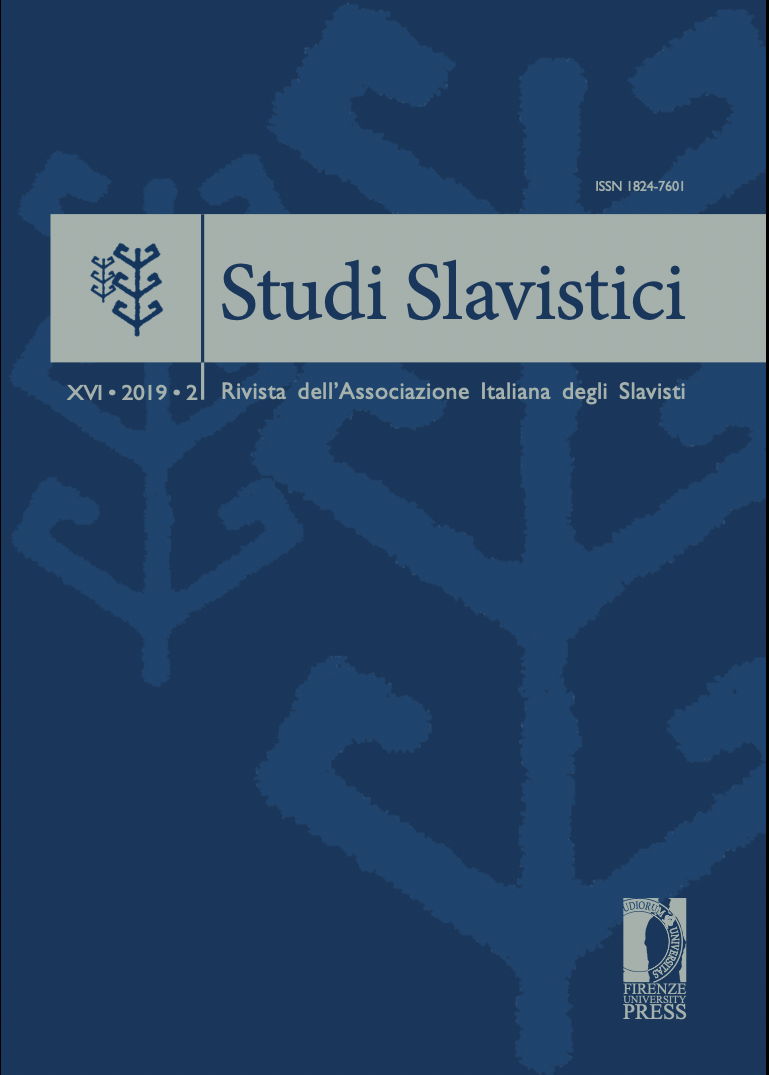Articoli
Most read articles by the same author(s)
- Marcello Garzaniti, Francesca Romoli, Massimo il Greco, Firenze e l’Umanesimo italiano , Studi Slavistici: Studi Slavistici VII • 2010
- Francesca Romoli, Писану видѣх / писано и вѣдах. About the Sources of Maximus the Greek’s Povest’ strašna , Studi Slavistici: Studi Slavistici XVI (2019) 2
- Maria Chiara Ferro, Francesca Romoli, Gli attributi di Dio. Per una traduzione slavo ecclesiastico-russo-italiano del lessico religioso e teologico-filosofico , Studi Slavistici: Studi Slavistici X • 2013
- Maria Chiara Ferro, Francesca Romoli, Names and Attributes of the Mother of God. For a Church Slavonic-Russian-Italian Lexicon of Religious Terms , Studi Slavistici: Studi Slavistici XI • 2014
- Francesca Romoli, L’Epistola al gran principe di Mosca Vasilij III sulla traduzione del Salterio commentato di Massimo il Greco fra retorica classica e prassi umanistica , Studi Slavistici: Studi Slavistici VII • 2010
- Francesca Romoli, Sulle varietà dell’omiletica di Kirill Turovskij: lo Slovo po Pascě , Studi Slavistici: Studi Slavistici XV, 2018, 1
- Francesca Romoli, La letteratura di direzione spirituale: invarianti e variabili. La testimonianza del Poslanie Jakova-černorizca k knjazju Dmitriju Borisoviču , Studi Slavistici: Studi Slavistici XII • 2015
- Francesca Romoli, Lo Žitie Avraamija Rostovskogo. Specificità locali e processi di standardizzazione della prima redazione del testo , Studi Slavistici: Studi Slavistici IX • 2012
- Francesca Romoli, Le funzioni delle citazioni bibliche nello Slovo na verbnoe voskresen’e di Kirill Turovskij , Studi Slavistici: Studi Slavistici XIII • 2016


